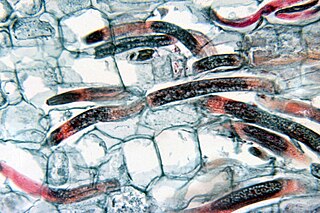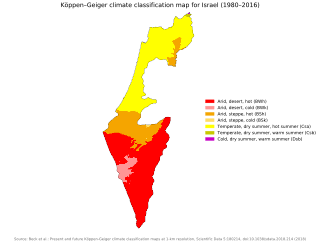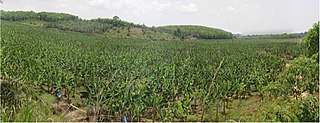
The economy of Jamaica is heavily reliant on services, accounting for 71% of the country's GDP. Jamaica has natural resources and a climate conducive to agriculture and tourism. The discovery of bauxite in the 1940s and the subsequent establishment of the bauxite-alumina industry shifted Jamaica's economy from sugar, and bananas.

The economy of Nicaragua is focused primarily on the agricultural sector. Nicaragua itself is the least developed country in Central America, and the second poorest in the Americas by nominal GDP. In recent years, under the administrations of Daniel Ortega, the Nicaraguan economy has expanded somewhat, following the Great Recession, when the country's economy actually contracted by 1.5%, due to decreased export demand in the American and Central American markets, lower commodity prices for key agricultural exports, and low remittance growth. The economy saw 4.5% growth in 2010 thanks to a recovery in export demand and growth in its tourism industry. Nicaragua's economy continues to post growth, with preliminary indicators showing the Nicaraguan economy growing an additional 5% in 2011. Consumer Price inflation have also curtailed since 2008, when Nicaragua's inflation rate hovered at 19.82%. In 2009 and 2010, the country posted lower inflation rates, 3.68% and 5.45%, respectively. Remittances are a major source of income, equivalent to 15% of the country's GDP, which originate primarily from Costa Rica, the United States, and European Union member states. Approximately one million Nicaraguans contribute to the remittance sector of the economy.

A banana is an elongated, edible fruit – botanically a berry – produced by several kinds of large herbaceous flowering plants in the genus Musa. In some countries, cooking bananas are called plantains, distinguishing them from dessert bananas. The fruit is variable in size, color, and firmness, but is usually elongated and curved, with soft flesh rich in starch covered with a rind, which may have a variety of colors when ripe. The fruits grow upward in clusters near the top of the plant. Almost all modern edible seedless (parthenocarp) bananas come from two wild species – Musa acuminata and Musa balbisiana. Most cultivated bananas are M. acuminata, M. balbisiana, or hybrids of the two.

A cash crop, also called profit crop, is an agricultural crop which is grown to sell for profit. It is typically purchased by parties separate from a farm. The term is used to differentiate marketed crops from staple crop in subsistence agriculture, which are those fed to the producer's own livestock or grown as food for the producer's family.

Black sigatoka is a leaf-spot disease of banana plants caused by the ascomycete fungus Mycosphaerella fijiensis (Morelet), also known as black leaf streak. It was discovered in 1963 and named for its similarities with yellow Sigatoka, which is caused by Mycosphaerella musicola (Mulder), which was itself named after the Sigatoka Valley in Fiji. In the same valley an outbreak of this disease reached epidemic proportions from 1912 to 1923.

Radopholus similis is a species of nematode known commonly as the burrowing nematode. It is a parasite of plants, and it is a pest of many agricultural crops. It is an especially important pest of bananas, and it can be found on coconut, avocado, coffee, sugarcane, other grasses, and ornamentals. It is a migratory endoparasite of roots, causing lesions that form cankers. Infected plants experience malnutrition.

Sigatoka is a town in Fiji. It is on the island of Viti Levu at the mouth of the Sigatoka River, for which it is named, some 61 kilometres from Nadi. Its population at the 2017 census was 17,622. It is the principal urban centre for the province of Nadroga-Navosa.
Nicaragua produces coffee, cotton, bananas, sugar and beef cattle.

The primary form of agriculture in Sri Lanka is rice production. Rice is cultivated during Maha and Yala seasons. Tea is cultivated in the central highlands and is a major source of foreign exchange. Vegetables, fruits and oilseed crops are also cultivated in the country. There are two Agriculture Parks abbreviated as A. Parks established by the Department of Agriculture. Out of the total population in Sri Lanka, 27.1% engages in agricultural activities. Agriculture accounted for 7.4% of the GDP in 2020.

Agriculture in Israel is a highly developed industry. Israel is an exporter of fresh produce and a leader in agricultural technologies. The southern one-half of Israel is desert. The northern one-half is more conducive for agriculture. According to the World Bank, 29.7 percent of Israel is agricultural land. The shortage of water is a constraint. In 2008, agriculture represented 2.5% of total GDP and 3.6% of exports. Israel is not self-sufficient in growing food. In 2021, Israel's agricultural imports totaled 8,791 million and agricultural exports totaled 2,445 million dollars. Grains, oilseeds, meat, coffee, cocoa, and sugar were among the imports.

Benin is predominantly a rural society, and agriculture in Benin supports more than 70% of the population. Agriculture contributes around 35% of the country's gross domestic product (GDP) and 80% of export income. While the Government of Benin (GOB) aims to diversify its agricultural production, Benin remains underdeveloped, and its economy is underpinned by subsistence agriculture. Approximately 93% of total agricultural production goes into food production. The proportion of the population living in poverty is about 35.2%, with more rural households in poverty (38.4%) than urban households (29.8%). 36% of households depend solely upon agricultural (crop) production for income, and another 30% depend on crop production, livestock, or fishing for income.

Agriculture was the foundation of the economy in Ivory Coast and its main source of growth. In 1987 the agricultural sector contributed 35 percent of the country's GDP and 66 percent of its export revenues, provided employment for about two-thirds of the national work force, and generated substantial revenues despite the drop in coffee and cocoa prices. From 1965 to 1980, agricultural GDP grew by an average 4.6 percent per year. Growth of agricultural GDP from coffee, cocoa, and timber production, which totaled nearly 50 percent of Ivory Coast's export revenues, averaged 7 percent a year from 1965 to 1980.

The economy of Ivory Coast is stable and currently growing, in the aftermath of political instability in recent decades. The Ivory Coast's economy is largely market-based and depends heavily on the agricultural sector. Almost 70% of the Ivorian people are engaged in some form of agricultural activity. The economy grew 82% in the 1960s, reaching a peak growth of 360% in the 1970s, but this proved unsustainable and it shrank by 28% in the 1980s and a further 22% in the 1990s. This decline, coupled with high population growth, resulted in a steady fall in living standards. The Gross national product per capita, now rising again, was about US$727 in 1996. It was substantially higher two decades before. Real GDP growth is expected to average 6.5% in 2024-25.

Banana production in Honduras plays an important role in the economy of Honduras. In 1992, the revenue generated from banana sales amounted to US$287 million and along with the coffee industry accounted for some 50% of exports. Honduras produced 861,000 tons of bananas in 1999. The two corporations, Chiquita Brands International and the Dole Food Company are responsible for most Honduran banana production and exports.

Ensete ventricosum, commonly known as enset or ensete, Ethiopian banana, Abyssinian banana, pseudo-banana, false banana and wild banana, is a species of flowering plant in the banana family Musaceae. The domesticated form of the plant is cultivated only in Ethiopia, where it provides the staple food for approximately 20 million people. The name Ensete ventricosum was first published in the Kew Bulletin 1947, p. 101. Its synonyms include Musa arnoldiana De Wild., Musa ventricosa Welw. and Musa ensete J. F. Gmelin. In its wild form, it is native to the eastern edge of the Great African Plateau, extending northwards from South Africa through Mozambique, Zimbabwe, Malawi, Kenya, Uganda and Tanzania to Ethiopia, and west to the Congo, being found in high-rainfall forests on mountains, and along forested ravines and streams.

Coffee is Uganda's top-earning export crop. In 1989 Uganda's coffee production capacity exceeded its quota of 2.3 million bags, but export volumes were still diminished by economic and security problems, and large amounts of coffee beans were still being smuggled out of Uganda for sale in neighbouring countries. Uganda is one of the few countries in the world with indigenous coffee, with Robusta coffee growing wild around Lake Victoria.

Banana production in Ecuador is important to the national economy. Ecuador is one of the world's top banana producers, ranked 5th with an annual production of 8 million tonnes as of 2011. The country exports more than 4 million tonnes annually. The crop is mostly grown on private plantations which sell their crop to national and international companies such as Chiquita, Del Monte, Dole, and Noboa. and others.
Flhorban 920 (FB920) is a synthetic banana hybrid developed as a cultivar of banana naturally resistant to Black and Yellow Sigatoka fungi in an attempt to replace the highly susceptible Cavendish banana. Additionally, FB920 has been shown to improve root resistance to Burrowing nematodes.
ProMusa was the name originally given to a global program on banana improvement set up by INIBAP in 1997. In 2007, it was restructured as a knowledge-sharing platform coordinated by Bioversity International. It was dissolved in 2021.

The banana industry is an important part of the global industrial agrobusiness. About 15% of the global banana production goes to export and international trade for consumption in Western countries. They are grown on banana plantations primarily in the Americas.

















